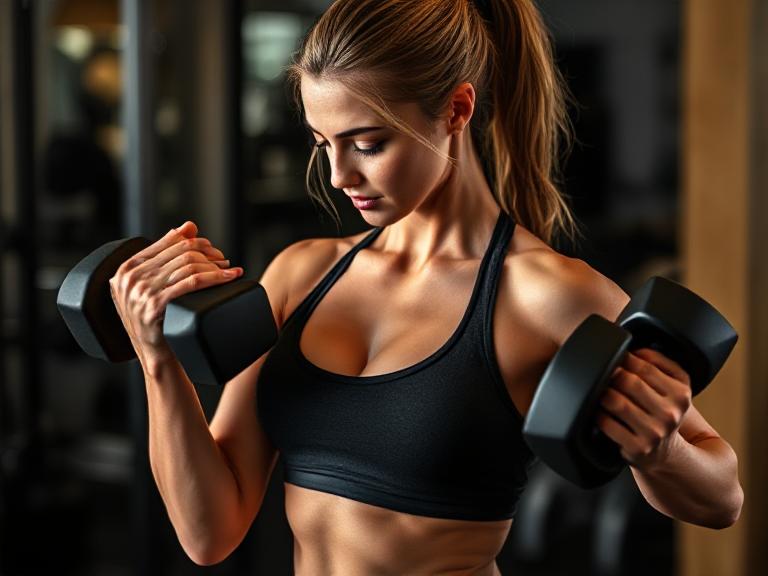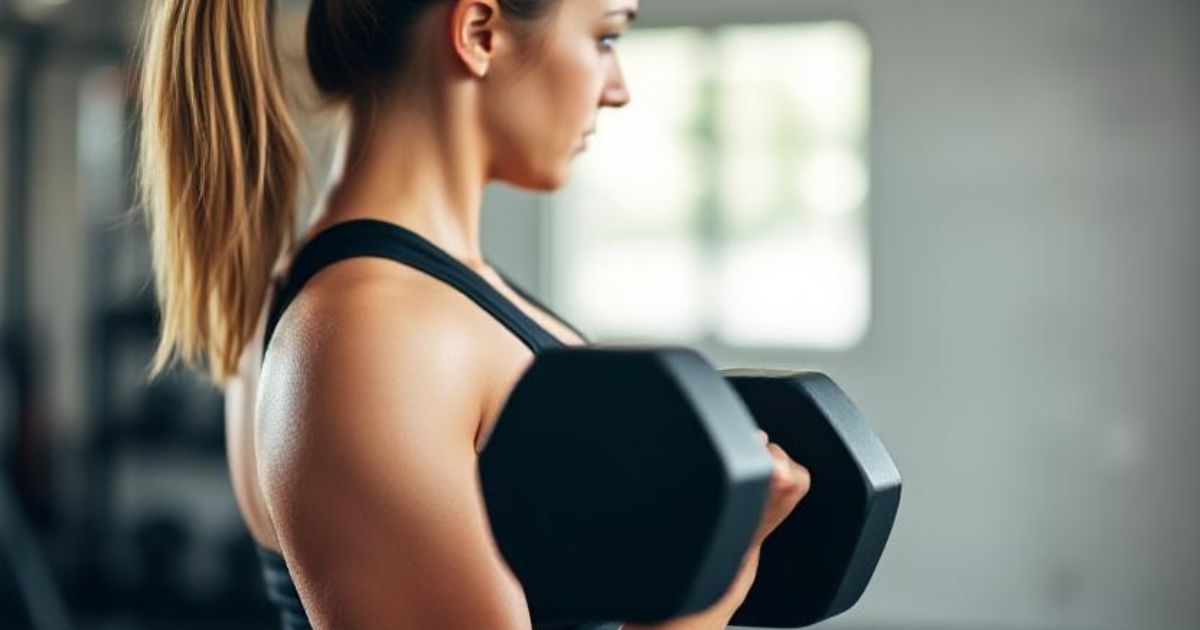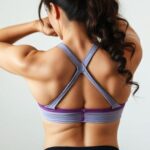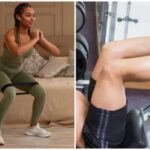How Important is Shoulder Training?
Shoulder Workouts: When you think of a really impressive physique, shoulder definition ranks at the top. Strong, sculpted shoulders give an alluring look to your body; they help to raise and flaunt your chest, improve posture, boost athletic performance, and take shoulder protection from injury.
On the contrary, most exercise freaks tend to overtrain or usually leave out a shoulder workout, causing one side of the body to underdevelop or run into stagnation.
Therefore, in this ultimate shoulder workout guide, everything necessary for you will be here to enable you to pump symmetrical and powerful shoulders.
In this guide, you will learn:
The key anatomy of the shoulders
The best shoulder exercises for size and strength
This is how to structure a shoulder workout
Common mistakes to avoid
Shoulder workout routines for beginners to advanced athletes
Let us get started!

Anatomy of Shoulders: The Building Block for Great Workouts
And before you ever lift a dumbbell, make sure you understand shoulder anatomy.
That is because the shoulder joint is a complicated joint, consisting of three basic muscle groups called as deltoids:
Deltoid Anterior (Front)
Deltoid Lateral (Side)
Deltoid Posterior (Rear)
Each head needs targeted exercises to develop well, and with some kind of neglect, a person will develop poor posture, restricted movement, and increased susceptibility to injuries.
Pro Tip: Aim to hit all three deltoid heads evenly during workouts for maximum growth and stability.
Superlative Shoulder Exercises to Achieve Sculpted Shoulders
Athletes Overhead: Barbell v Dumbbell
Isolated Focus: Anterior- and lateral-headed deltoids.
Indeed, overhead is a lord of shoulder builders; BB offers the advantage of heavier loads, while dumbbells can correct imbalances. Keeping a tight core now. Press overhead with no locking out of elbows at the end.
Variations:
Standing Barbell Overhead Press
Dumbbell Seated Shoulder Press
Laterals:
Isolated focus: Lateral-head deltoids.
Wider silhouette shoulders are achievable with lateral raises, which isolate some middle areas of your delts, leading to width.
Strict form with lower weights.
Slightly raise the dumbbells above shoulder height.
Variation: Cable lateral raises for constant tension.
Rear Delt Flies:
Isolated focus: Posterior-headed deltoids.
Rear delts are the ones that many people do not often consider. Rear delts fly, though, correct that.
Be seated or bent.
Focus on squeezing together the shoulder blades.
Tip: For later variety, cables or reverse pec-deck machines are possibilities.
Arnold Press
Isolated focus: Anterior- and lateral-headed deltoids.
From Arnold Schwarzenegger, this movement would be that particular action utilizing a twist for much more activation.
Start with your palms pointing toward you.
Then rotate as you go overhead pressing.
It is a bit tougher than a normal press but gives fantastic results.
Face Pulls
Isolated focus: Rear delts, trapezius muscles, and rotator cuff muscles.
Face pulls rather than train the stabilizer muscles for good, healthy shoulders.
Use a rope attachment on a cable machine.
Pull towards the forehead with high elbows.
Bonus: One of the best injury prevention exercises!
How to Design Your Ideal Shoulder Program
An excellent shoulder workout is not just putting together a random bunch of exercises. Overall, it needs to be intelligently structured.
Warm up properly (dynamic stretches, light sets). Train heavy compounds first (e.g., overhead press). Follow with isolation exercises (e.g., lateral raises, rear delt flys)
Mobility and stability work (face pulls, band pull-aparts). Progressively overload (increase weights, repetitions, or intensity over time).
Example of an Ideal Shoulder Workout
Exercise Sets Reps
- Overhead Barbell Press 4 6-8
- Dumbbell Lateral Raises 3 12-15
- Rear Delt Fly 3 12-15
- Arnold Press 3 8-10
- Face Pulls 3 15-20
The Common Shoulder Training Mistakes (And How to Fix Them)
All these mistakes need correction in order to move quickly in your growth:
1. Using Excessive Weight
Swinging heavy dumbbells is dangerous for joints and muscles, so form before ego must always be observed.
2 .Ignoring Rear Delts
Weak rear delts will lead to highly rounded shoulders and bad posture. Always balanced training.
3. Not Warming Up
The cold shoulder joint is a disaster waiting to happen. Always do your dynamic warmups and light sets before heavy lifts.
- Poor Mind-Muscle Connection
If you do not feel your shoulders working, modify the technique. Concentrate on controlled movements and muscle engagement.
Shoulder Workouts for Everyone
Beginner Shoulder Workout
- Seated Dumbbell Press: 3×10
- Lateral Raises: 3×12
- Resistance Band Face Pulls: 3×15
- Tip: Proper technique should be learned before weighing up.
Intermediate Shoulder Workout
- Standing Barbell Overhead Press: 4×6
- Dumbbell Arnold Press: 3×8
- Cable Lateral Raises: 3×15
- Rear Delt Pec Deck: 3×12
Tip: Start adding progressive overload so you can keep gaining strength and size!
Advanced Shoulder Workout
- Seated Heavy Dumbbell Press: 4×5
- Barbell Upright Row: 3×8
- Heavy Cable Lateral Raises: 4×12
- Rear Delt Dumbbell Swings: 4×15
- Face Pulls (slow eccentric): 3×20
Tip: Drop sets and slow eccentric are the prime intensity techniques for the advanced lifter.
Recovery: An Important Secret to Building Bigger Shoulders
Training hard is only half the battle; recovery is what builds muscle.
Key Recovery Tips:
In order to facilitate recovery, get 7-9 hours of quality sleep per night.
Eat enough protein (~1g per pound of body weight).
Stretch and foam roll your shoulders; do this regularly.
Do not neglect the rest days!
Important to remember is that shoulders are involved in chest and back days too; keep your split smart to avoid overtraining.
Build Yours Best Shoulders Yet
Sculpted, strong shoulders are not just the privilege of bodybuilders; every serious trainer needs them badly enough. With the right exercises, good program design, and letting recovery be a priority, one can forge shoulders that elicit the jealous stares from everyone.
FAQs
Shoulder Workout Frequently Asked Questions
- How often should I be training my shoulders? Ideally, 1-2 times a week, depending on your actual split.
2. Can I train my shoulders and chest on the same day?
Yes, although you should prioritize compound lifts, manage your volume, and avoid fatigue.
- How long does it take to achieve visible shoulder growth?
Consistent training should usually produce noticeable changes in about 8-12 weeks.
- Do I need to include shoulder workouts if I’m already training chest and back?
Yes, Shoulder isolation work will ensure balanced development and injury prevention.
- Should you eat something before or after a workout?
Ideally, both eating before exercising and eating after working out have benefits.
Eating beforehand fuels your system for a strong training session, especially if you’re lifting heavy weights.
Eating after elects replenishment of glycogen levels, repairs muscle tissues, as well as growth.
For best results, light balanced meals should be consumed about 1-2 hours before coupling any exercise with a protein-rich meal or a shake within 30-60 minutes of post-workout.
- How long after eating do you wait to work out?
You should wait about 1 to 2 hours after a full meal before doing anything like super-heavy shoulder training.
But if you had a big meal, for example, lunch or dinner, give it closer to 2 hours.
If you had a small snack (like a banana or protein bar), you can typically work out after 30-45 minutes.
This allows for starting digestion and saving one from discomfort.
- How long is the wait to go back to working out after eating?
That depends on the amount and on the type of meal:
Large meal (heavy carbs, protein, fats): Wait approximately 2 hours.
Light snack (small carb or protein source): Wait 30-60 minutes.
And always listen to your body — if you feel bloated or sluggish, give yourself a little extra time.
- How many days a week should I work out?
Generally, for people looking to put on muscle and improve fitness overall, three to five days per week should be sufficient.
Beginners can consider starting 3 days per week of full-body training.
For intermediate/advanced lifters, a 4- or 5-day split, such as chest/shoulders, back, legs, arms/core, is often beneficial.
Specifically for shoulder training, weakly and getting indirect work through chest and back exercise often gives superb results.
9. Should I eat something before or after a workout?
(Bla-bla bonus repetition for SEO-one in-the-slight rewordings!)
Both are imperative, but if forced to make a choice,
Eat before a Workout If you Need Energy for a Heavy Lifting Session.
Eat After Workout for Maximum Recovery and Muscle Growth.
And High Protein Meals Around Your Workout Windows to Maximize Then Sculpted Shoulders.
















